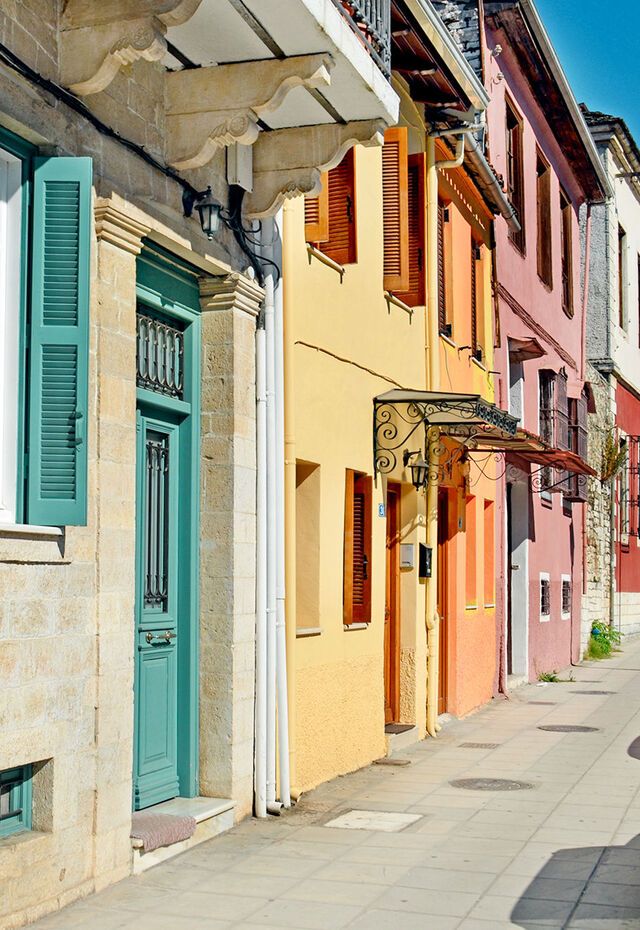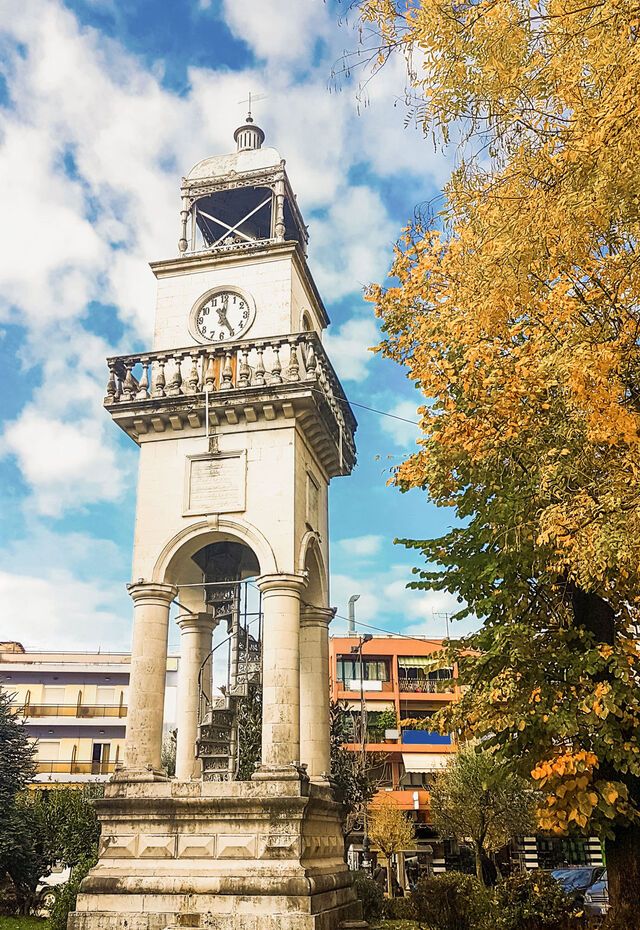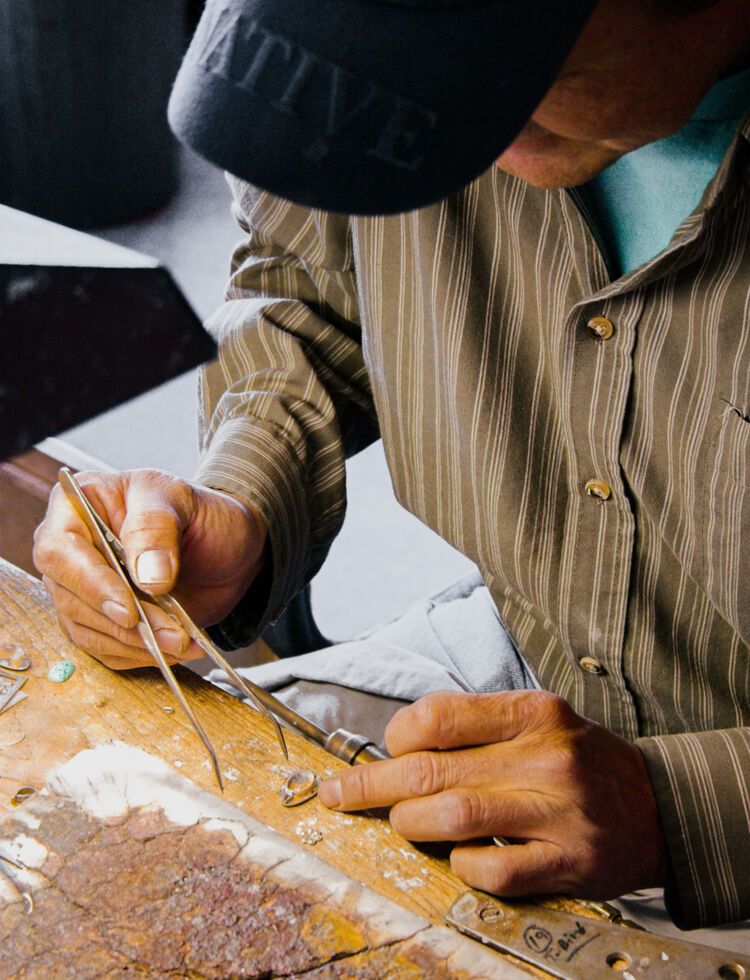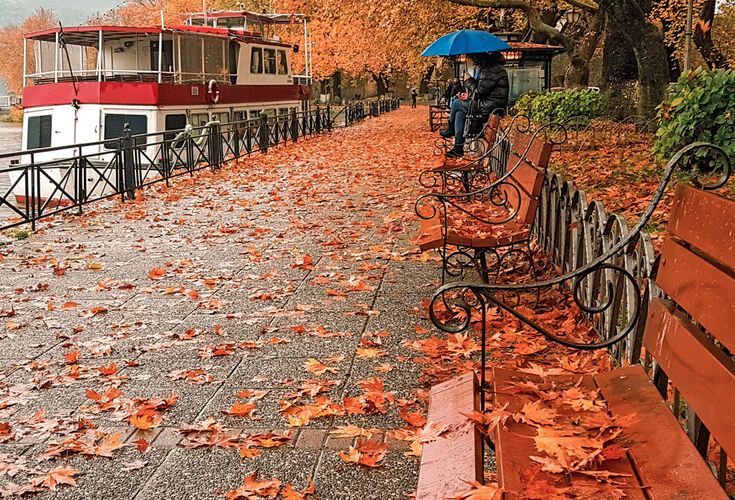A walking tour of Ioannina city


OVERVIEW
The capital of Epirus, in northwestern Greece, Ioannina is a much-loved destination forever linked to the infamous Ali Pasha, who ruled in these parts in Ottoman times. Built on the shore of Lake Pamvotida (or Pamvotis), it is a charming and at the same time lively city, with an active student population that helps bring a modern touch to the many traditional features. Next to monuments and historic buildings reflecting a rich multicultural past, there are lively cafes, shops and restaurants that you'll love discovering.
Highlights of what to see in Ioannina include the city’s famous castle, with two separate walled sections containing monuments and buildings that have their own cultural and historical significance, including Christian, Ottoman and Jewish elements. There are also galleries and museums that showcase a different aspect of the city's rich history (such as Ioannina’s silversmithing heritage) and Instagrammable arcades.
Most of all, you’ll enjoy getting to know Ioannina’s unique identity, whether you’re admiring 19th and early 20th-century architectural gems or sitting down in a local taverna about to tuck into a traditional meze of local delicacies, including handmade pies (alevropita, batsaria, kothropita) and sweets like glyko tou koutaliou (spoon sweet) and siropiasta (as syrupy as they sound).
DON'T MISS
Highlights of a walking tour of Ioannina city
Ioannina Castle
Exploring the fortified old town by Lake Pamvotida is a highlight of any walking tour of the city of Ioannina. Synonymous with Ali Pasha, Ioannina Castle is the oldest continuously inhabited Byzantine fortress in Greece and is divided into two walled sections that you could spend hours exploring. The northeastern citadel dates back to Byzantine times, when it was known as the Epano Goulas (or Upper Town) and had a palace and church dedicated to St John. These were replaced in the 17th century by the Ottomans’ Aslan Pasha Mosque Complex. The Castle also has a Jewish quarter that housed Ioannina’s Romianote Jewish population and a synagogue.
To the southeast is Its Kale (Inner Fortress) of Ioannina Castle, which is where Ali Pasha built his palace. The most impressive monuments here are the Fethiye Mosque, built in 1430 shortly after the Ottomans captured Ioannina, and Ali Pasha’s tomb. The Inner Fortress also contains two of Ioannina’s most interesting museums, the Byzantine Museum and the Silversmithing Museum.
Take a tour of Ioannina Castle
Litharitsia Park
So many of the Ioannina city’s highlights are found around Litharitsia Park, but before you get exploring properly, take a moment to walk around the park itself, built on a hill very close to the castle. It is known for its busts (eight in all) of important scholars, benefactors and leaders of the city from different historical periods and for Litharitsia Fortress, built by Ali Pasha in around 1800 to serve as one of the protective enclosures that were a first line of defence before the castle. Originally with cannons at the top and guns at the bottom, it is a good example of late-Ottoman fortification architecture and has a rooftop restaurant/bar with views over the whole city.
At the top of the hill, Ali Pasha built a palace (seraglio) in 1805, designed by the architect Frederick Freywald. The famous British topographer William Leake described its magnificent views and commented that it was influenced by Chinese architecture.
Archaeological Museum of Ioannina
At the top of Litharitsia Park is the Archaeological Museum of Ioannina. It tells the story not only of Ioannina's long history, but of all the civilisations of Epirus, from the time of the Ice Age hunter-gatherers 200,000 years ago to the decline of the Roman Empire in the region in the 3rd and 4th centuries AD. Through the museum's seven halls and around 3,000 artefacts, you'll gain an understanding of a region that played a vital role in the ancient world due to its proximity to major trade routes such as the Via Egnatia. Among the standout exhibits are remains from the Sanctuary of Zeus at Dodona, including votive offerings and lead tablets inscribed with questions to the oracle addressed to Zeus and his local wife, Dione.
Park of Heroes
Dedicated to the memory of those who lost their lives in major wars and struggles for Greece's independence and freedom, the Park of Heroes is another popular spot for locals looking for a quiet place to relax. There are statues and plaques commemorating heroes of the Balkan Wars of 1912-13, World War II and other conflicts, and at the entrance to the park is the Tomb of the Unknown Soldier. You'll also see Ioannina's Clock Tower, built in 1905 by Aslan Pasha (the Ottoman governor at the time), in the lower town. It was moved here in 1918 and is now a popular meeting point for locals.
The mosque and madrassa of Veli Pasha
On the southeastern slopes of Litharitsia Park is a complex of buildings that were part of a palace constructed by Ali Pasha for his son, Veli Pasha. They include a mosque, a madrassa and outbuildings. The Chiekur Mosque replaced an older (16th-17th century) mosque, which is thought to have been built on the site of the Byzantine church of St Stefanos. You will recognise it from its square-domed hall and an enclosed porch, covered by three small domes. The only part of the minaret that remains is its base in the southwestern corner. The Madrassa (seminary) is a rectangular building divided internally into five rooms, while the Mageiria (whose name in Greek refers to its original function as a kitchen or cookhouse) is a large rectangular building with a series of chimneys rising from its roof. Today it houses the Dance School of the Cultural Centre of the Municipality of Ioannina.
A stroll around the shops and arcades
Crossing Averoff Street by the Park of Heroes, you enter 28 October Street, containing shops, cafes and tavernas and surrounded by many of Ioannina’s busiest shopping streets. It is also worth heading to Anexartisias (Independence) Street, whose side streets are also filled with quaint tavernas and shops. A wonderful local experience is to enjoy a meze meal in a tsipouradiko restaurant. And make sure to visit Ioannina’s famous arcades (Stoa Louli, Stoa Liambei and Stoa Alieos). Originally built as covered and uncovered galleries with small shops after a fire in 1869, they now house wonderful restaurants and shops. You can continue to Mavili Square, which has great views of the lake and Mount Mitsikeli. It is named after Lorentzos Mavilis, a Corfiot poet who was a master of the sonnet and was killed fighting for the liberation of Ioannina in 1912.
Municipal Art Gallery of Ioannina
At the junction of 28 October Street and Adamantiou Korai Street is the Municipal Art Gallery of Ioannina, housed in a 19th-century neoclassical building with neo-Renaissance elements. Known as the Pyrsinella Mansion, it was the residence of Vasileios Pyrsinellas, who was mayor of the city in the 1920s and contains an excellent collection of paintings, sculptures and engravings by renowned Greek artists of the 19th and 20th centuries. Among the more than 1,000 works on display are examples of Impressionist art and works inspired by the Munich School.
Ioannina’s island
Boats leave throughout the day to Ioannina’s famous island in the middle of Lake Pamvotida, known to locals simply as To Nisi (The Island). It is a core part of the identity of Ioannina, home to a small community of fishermen and seafood tavernas specialising in seafood from the lake. There are also cafes and shops selling locally made souvenirs. It also contains excellent examples of traditional Epirote architecture and monasteries of great historical importance, including the Monastery of St Nicholas Filanthropinon, founded in 1291 and famous for its wonderful frescoes. The Monastery of Saint Pantaleimon is where Ali Pasha was killed in 1822. By the monastery is the Ali Pasha and Revolutionary Period Museum, whose exhibits include Ali Pasha’s gold-plated rifle and water pipe.
Kostas Frontzos Folklore Museum
The Kostas Frontzos Folklore Museum allows you to immerse yourself in the traditional heritage of Epirus. Located on Michail Aggelou Street in a restored 19th-century Ottoman-era mansion, it houses a collection of artefacts and exhibits that highlight the folk traditions of the region. Among the displays are men’s and women’s traditional costumes and jewellery, as well as household items of everyday life and a reconstructed living room of Ioannina’s urban society. Established by the Society for Epirote Studies, the museum is named after its founder, Kostas Frontzos, a prominent collector.
Traditional Crafts Centre of Ioannina
Ioannina’s reputation for silversmithing spans centuries, and while there are plenty of opportunities to shop for handcrafted silverware in the city centre and on the island, the Traditional Crafts Centre of Ioannina (on Archiepiskopou Makariou Avenue) presents the perfect opportunity to learn more about the craft. The centre showcases the artistry and sophistication of silversmithing in Ioannina, with silverware workshops, a museum, a cultural events hall, and a shop where you can buy jewellery and other items crafted from silver directly from artisans. You can witness firsthand the skill and tradition that made Ioannina’s silverware internationally renowned over the centuries.
Architectural gems of the city
One of the joys of walking around the city centre is admiring the architecture that gives you a glimpse of 19th and early 20th-century Ioannina. Highlights include Levi House, on Koundouriotou Street in the Jewish quarter by the castle. Built in the second half of the 19th century by a renowned military surgeon, it was for many years a private school and is still known as 'Lykeio’ (High School). Likewise, the listed Tzavella Mansion on Pavlou Mela Street (housing various museums) and Misios Mansion are typical of wealthy families of the time and a characteristic example of 19th century local architecture.
The Papazogleios Weaving School on Papazoglou Street has a neoclassical monumental character (including columns with Corinthian capitals and a Doric-order porch) and the Kaplaneios School on Zois Kaplani Street was an important centre for Greek learning during Ottoman times. Finally, the Post Office building on Markou Botsari St was built in 1905 as a school under the orders of the Pasha of the time, and Ioannina’s City Hall, opposite the clock tower in Dimokratias Square, was constructed in 1928 by the National Bank of Greece in a post-Byzantine style.
How do you get to the city of Ioannina from Athens?
Ioannina has a domestic airport with flights to Athens a few times a week. Alternatively, you can drive from Athens along the Olympia Odos and Ionia Odos (411km, 4.5hrs). There is also a daily bus schedule from Athens to Ioannina.
How do you get to the city of Ioannina from Thessaloniki?
You can drive from Thessaloniki to Ioannina on the Egnatia Odos (260km, 3hrs). There is also a daily bus schedule from Thessaloniki to Ioannina.
How do you get to Ioannina from the airport?
Ioannina city centre is 5km from the airport (about 15 minutes). You can rent a car or take a taxi or bus (check the local bus schedule)
As the main city of Epirus, in northwestern Greece, Ioannina is full of life all year round. All that changes are the colours and the excursions that you can add to your trip around Epirus. In the summer months, you can enjoy the beaches near Parga and Sivota. And spring, autumn & summer are ideal seasons for rafting in the Voidomatis River or the Acherontas River, and for hiking in the Vikos Gorge. Discovering the Zagori villages is worthwhile at any time of year.
- Autumn
- Spring
- Summer
- Winter
Silversmithing Museum
More Info for Opening Hours & Tickets here
Byzantine Museum of Ioannina
More Info for Opening Hours & Tickets here
Municipal Museum of Ioannina
- Open daily
- 08:00-15:00 (winter) & 8:00-20:00 (summer)
- Tickets: €4.5 (€2.5 reduced)
- More Info: +30 26510 26356
Archaeological Museum of Ioannina | website
- More info +30 26510 01089
- Open daily from 08:30 to 15:30 (except Tuesdays)
- Tickets:
- From 1 November to 31 March: €3
- From 1 April to 31 October: €6 (€3 reduced)
Municipal Gallery of Ioannina | website
- More info +30 26510 75131
- Monday – Thursday: 08:00 - 15:00, Friday : 08:00 - 21:00, Saturday closed & Sunday 10:00 - 13:00 & 18:00 - 21:00
- Tickets: Free entrance
Ali Pasha and Revolutionary Period Museum | website
- More info +30 2651081791
- Tickets: €3.50 (reduced €3)
- Open daily from 09:30- 18:00
Kostas Frontzos Folklore Museum | website
- More info +30 26510 23566
- Opening hours: Monday-Friday 09:00-15:30 Saturday09:00-14:30
- Tickets: €2
Traditional Crafts Centre of Ioannina
- More info +30 26510 27650
- Monday & Wednesday 9:30-17:30 μ.μ.
- Tuesday, Thursday and Friday 09:30–14:30 & 17:30–20:30
- Saturday 09:30–20:00
- Sunday 10:00–15:00
How long will a walking tour of Ioannina city take?
- A walking tour of Ioannina city that includes all the monuments and sites outlined here (9.5km) will take around half a day, not including time in museums and the Castle. If you also visit the museums and fully explore the Castle, you will need a whole day. But we suggest spreading the experience over two days so that you can comfortably see all of the sites.
- Of course, the time you spend on your walking tour depends on how long you stop for a drink or a meal in a taverna on the way.


